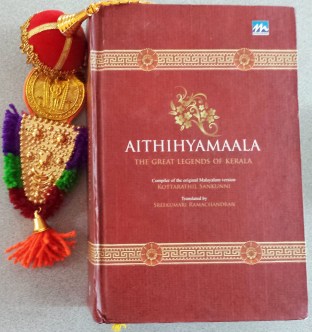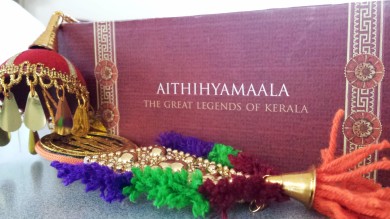As you might have read from Arundhati Roy’s work of fiction, Kerala was an awesome place to spend one’s childhood. A state that is highly literate and emphasizes reading, that has very good development indicators and got written up by Amartya Sen for the “Kerala Development Model”, one of the few states with the sex ratio as close to what one would expect in a society without female infanticide, the list could go on and on. But as a child these things don’t stand out or sink in. They are just a matter of fact about the world around you.
What is interesting as a child, is the wide eyed amazement with which you can soak in nature as well as culture in the world around you. Wonderful beaches, palm trees, greenery and backwaters. The monsoon rains that get you soaking wet just when schools reopen and you stand at bus stops in all your brand new school uniforms and shoes. Mosquitoes that defy all shoos and “Good Knight” devices and show up right by your ears in those hot, humid nights. The eternal “load shedding” through the year and the nights spent swatting flies and other bugs and trying to sleep on the terraces under the starry sky. Temples that hold a million secrets about themselves, including ones like the one about the Padmanabhaswamy Temple and its many riches that just got worldwide attention, much to the locals’ dismay. Dance forms like Kathakali, Theyyam, Theeyattu, Mohiniyaattom and others that come from a rich tradition of folk arts. Temple elephants that have fan followings of their own and legends about their lives. Sarpakkavus across the state that are revered in part and feared in part and the caution with which you walk around them as a child, recalling the stories your grandmothers told you. The ever scary Aezhilam Paala and its white flowers that supposedly attract Yakshis.
I could go on and on. Luckily for generations to come, there was one man who tried to distill all of this into one tome filled with fascinating stories. It is one-part a lesson in the history of Kerala and one-part fertile imagination run wild. I’m referring to Aithihyamaala by Kottarathil Shankunni of course. Those of you that grew up in Kerala couple of generations ago would not have missed this treasure trove of stories – of Bhartrhari and Parayi Petta Panthirukulam, Kumaranalloor Bhagawathi and Kayankulam Kochunni, great temple elephants like Vaikkom Tiruneelakantan and Tiruvattar Adikesavan, its a long, addictive list of fascinating stories.
For the longest time, there was no English translation available that I could fanatically recommend to friends from other states. Though I’m supremely unqualified, I harbored thoughts of attempting the impossible and translating it myself. Finally a few years ago, a selection of stories from the original were indeed translated by T.C. Narayan – something that I devoured off of Amazon pretty quickly.
The highlight of my recent trip back home to Kerala was my serendipitous discovery at the Guruvayoor Temple of a full translation of the book. Printed by Mathrubhumi, translated by Sreekumari Ramachandran and available here for purchase. If you plan to buy one big book of fables this year, this should be it. Some of the stories may not sound as magnificent without the cultural context, but man am I glad that I can finally find it in a language that reaches beyond the boundaries of Kerala!
The next few months shall be spent in merry abandon reliving memories of stories devoured several times over, of scary nights spent under the covers expecting a Yakshi to turn up outside my window, of evenings at the Padmanabhaswamy Temple watching the Sheeveli and wondering if our local elephant could hold a candle against Guruvayoor Kesavan, of weeks spent wondering why my local Ayurvedic doctor could not do miracles and fix things quickly like Vayakkare Achan Moosse or Alathiyur Nambi.
Thank you, Mathrubhumi, for bringing our childhoods back in such vivid colors into our imagination-deprived presents!


Leave a comment